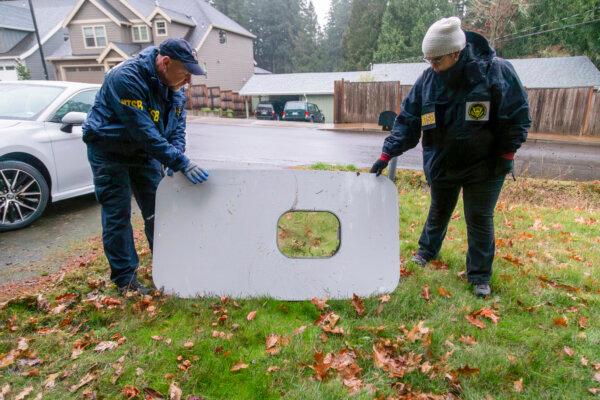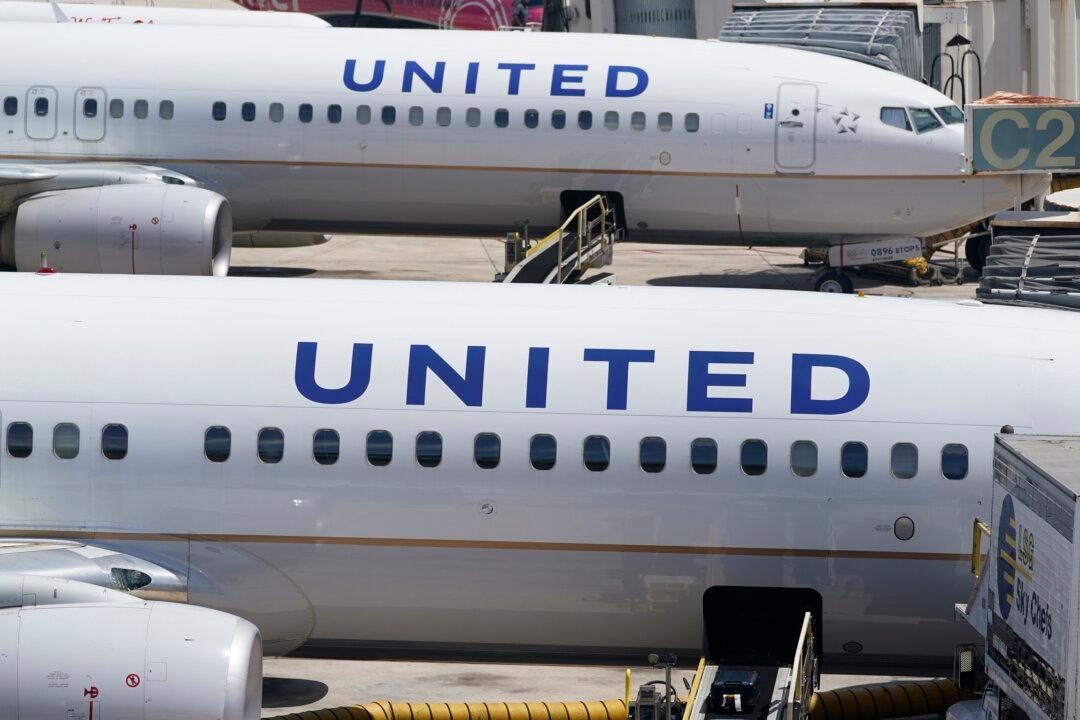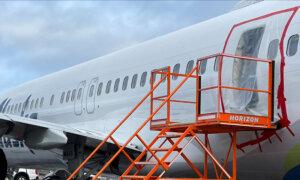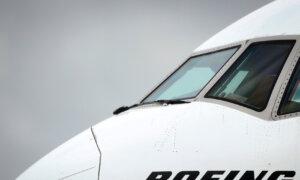United Airlines is blaming troubled plane maker Boeing for a $200 million hit to its earnings in the first three months of this year after a midair blowout led to the grounding of many of its Max 9 planes.
In its first-quarter 2024 financial results published on April 16, the company said it had a pretax loss of $164 million, which marked a $92 million improvement over the same quarter last year.
The Chicago, Illinois-headquartered airline said those earnings “reflect the approximately $200 million impact from the Boeing 737 MAX 9 grounding, without which the company would have reported a quarterly profit.”
Still, the first-quarter loss was narrower than expected by Wall Street, and United’s shares rose by roughly 6 percent in after-hours trading.
“United delivered strong financial and operational performance in the quarter,” the company said. “The demand environment remained strong with a double-digit percentage increase in business demand quarter over quarter, as compared to pre-pandemic. Additionally, the company was able to take advantage of a number of opportunities to adjust domestic capacity which drove meaningful improvements in first quarter profitability.”
The airline said it had an adjusted loss of $50 million in the quarter, marking an improvement from the $207 million loss it had in the same period last year.
Meanwhile, revenue was up nearly 10 percent, to $12.5 million.
United said its revenues were boosted in part by a roughly 9.1 percent increase in the miles flown by paying passengers.
Changes Ahead at United
The latest results came after United was forced to ground its Boeing 737 MAX 9 fleet for three weeks following the midair blowout of a door plug on an Alaska Airlines-operated flight, involving the same plane, in January.The incident prompted the U.S. Federal Aviation Administration (FAA) to conduct multiple safety inspections while the agency ordered Boeing to develop a comprehensive plan to address “systemic quality-control issues” within 90 days.
United has 79 Boeing 737 MAX 9s in its fleet.
Elsewhere in its latest financial results, United Airlines said it had made several adjustments to its long-term fleet strategy after its operations were impacted by delays to deliveries of Boeing planes.
The company has converted a portion of its Boeing MAX 10 aircraft orders to Boeing MAX 9 from 2025 through 2027; and “maintained the right” to convert more Boeing MAX 10 into MAX 8 or MAX 9 as needed, officials said.
It has also reached agreements with two lessors to lease 35 new Airbus A321neos with CFM engines, a 737 Max competitor.
Deliveries of those Airbus planes are due in 2026 and 2027, United said.
The airline also now anticipates it will receive 61 narrowbody aircraft and five widebody aircraft to be delivered in 2024.

Boeing Whistleblower Claims Company Ignored Concerns
Initially, United expected to receive 101 narrowbodies following the 737 MAX 9 grounding and the FAA’s announcement regarding significant production capacity constraints on Boeing, officials said.“We’ve adjusted our fleet plan to better reflect the reality of what the manufacturers are able to deliver. And, we'll use those planes to capitalize on an opportunity that only United has: profitably grow our mid-continent hubs and expand our highly profitable international network from our best in the industry coastal hubs,” United CEO Scott Kirby said in a statement.
The payment covered Alaska Airlines’s pretax loss related to the accident, including lost revenue and the cost of returning its Max 9 fleet to service after the three-week grounding.
Seattle, Washington-based Alaska Airlines has said it still expects additional compensation from Boeing.
Lawyers for Mr. Salehpour allege he was threatened with termination and retaliated against by senior officials at Boeing when he raised his concerns.
Boeing has denied Mr. Salehpour’s allegations and said they are “inaccurate” and “do not represent the comprehensive work Boeing has done to ensure the quality and long-term safety of the aircraft.”
However, the FAA is now reportedly probing Mr. Salehpour’s claims, according to The New York Times.
The Epoch Times has contacted Boeing for comment.







